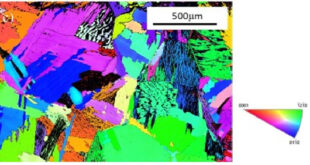Significance
For an internal combustion engine to move a vehicle down the road, it must convert the energy stored in the fuel into mechanical energy to drive the wheels. Burning 1 L of gasoline produces approximately 2.3 kg of CO2. Indeed, the majority of greenhouse gas emissions from transportation (which accounts for about 28% of total U.S. greenhouse gas emissions), are CO2 emissions resulting from the combustion of petroleum-based products, like gasoline, in internal combustion engines. With research showing that internal combustion engine-driven vehicles will continue to have significant share of the global market in the next two decades, it is imperative that internal combustion engines are improved in order to reduce the local and global environmental impact of transport. Atomization and mixing processes are important factors determining the performance of internal combustion engines. These factors can be enhanced by adopting not only higher fuel injection pressures but also better injection strategies.
Flash boiling, which is known to enhance the atomization process, is one promising strategy for improving the efficiency of internal combustion engines and reducing the associated emissions. Thus, a thorough understanding of flash boiling spray is an important step toward improving the injection strategies of internal combustion engines such as gasoline direct injection engines. Presently, most studies on flash boiling spray have focused on four main components of gasoline: hexane, isooctane and pentane, as well as ethanol which is a common gasoline additive.
Some of the factors affecting flash boiling include temperature, ambient pressure and superheated degree. Moreover, flash boiling could result in a better breakup and smaller droplet size. While flash boiling has been extensively investigated under various conditions, most studies have concentrated on typical types of single-component gasoline. To date, there are limited studies comparing the spray morphology and characteristics of different types of fuels, especially the four components of gasoline and their dependence on fuel properties. In addition, the impact of aerodynamic drag on the spray breakup under flash boiling conditions are yet to be clarified.
Herein, researchers at the University of Illinois at Urbana-Champaign: Dr. Weihua Zhao, Dr. Junhao Yan, Dr. Suya Gao, Professor Timothy Lee and Mr. Xiangrong Li studied the effects of aerodynamic breakup on spray characteristics and behavior under flash boiling conditions. The authors compared the spray characteristics among the four main gasoline components that were also used as test fuels: hexane, isooctane, pentane, and ethanol. The pressure ratio (Rp) was used as the main indicator for the superheated degree. The micro/macroscopic characteristics of the sprays were obtained via Phase Doppler Anemometry and Diffused Backlight Imaging, while the aerodynamic breakup process was evaluated using four dimensionless numbers. Their work is currently published in the journal, Applied Thermal Engineering.
The authors showed that a reduction in the increased the flash boiling intensity, resulting to a dramatic change in the spray morphology and smaller droplet size irrespective of the fuel type. In contrast, the spray centers appeared to merge with the spray plumes at lower RPfrom 1.0. The spray collapsed at RP = 0.18 for pentane and at RP = 0.28 for ethanol, hexane and isooctane. The fuel properties also exhibited significant effects on the spray characteristics. Pentane exhibited the smallest penetration length accompanied by a dramatic reduction of the far-field angle at , attributed to its lower latent vaporization heat and higher vapor pressure.
On the other hand, ethanol exhibited relatively larger near- and far-field angles and Sauter mean diameter thanks to its higher latent vaporization heat. Furthermore, under the tested conditions, the spray with pentane recorded the largest aerodynamic breakup intensity, followed by those with hexane, isooctane and ethanol, respectively. As per the microscopic results, the Sauter mean diameter of hexane, pentane and isooctane has the same value of 10µm under RP of 0.28.
In summary, University of Illinois at Urbana-Champaign engineers and scientists explored the spray characteristics and aerodynamic breakup of four single-component fuels. Two key recommendations were provided. First is increasing the flash boiling intensity of the spray by increasing the proportions of components with larger vapor pressure. Second is enhancing the fuel/air mixing process can be achieved by reducing the proportion of components with higher latent heat of vaporization. Moreover, the aerodynamic breakup plays a key role in spray atomization must be considered when designing gasoline direct injection engines under low flash boiling conditions. In a statement to Advances in Engineering, Professor Timothy Lee the corresponding author said “By completing these sets of detailed experiments, we are opening a path for simulation work by having a baseline to configure against. From there, we can utilize machine learning and generic algorithms to quickly and effectively discover new and better ways to design injectors for gasoline engines, which can bypass the traditional methods of experimental testing.”
Reference
Zhao, W., Yan, J., Gao, S., Lee, T., & Li, X. (2022). Effects of fuel properties and aerodynamic breakup on spray under flash boiling conditions. Applied Thermal Engineering, 200, 117646.
 Advances in Engineering Advances in Engineering features breaking research judged by Advances in Engineering advisory team to be of key importance in the Engineering field. Papers are selected from over 10,000 published each week from most peer reviewed journals.
Advances in Engineering Advances in Engineering features breaking research judged by Advances in Engineering advisory team to be of key importance in the Engineering field. Papers are selected from over 10,000 published each week from most peer reviewed journals.

